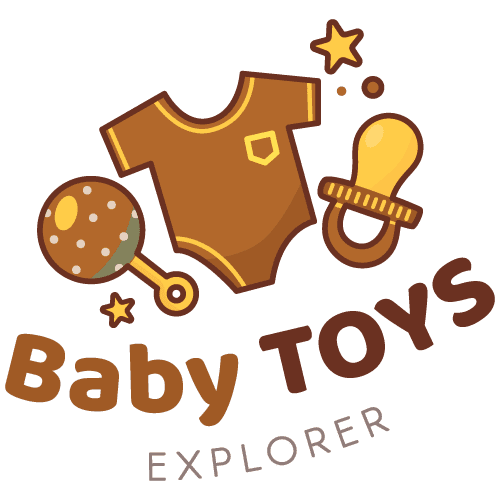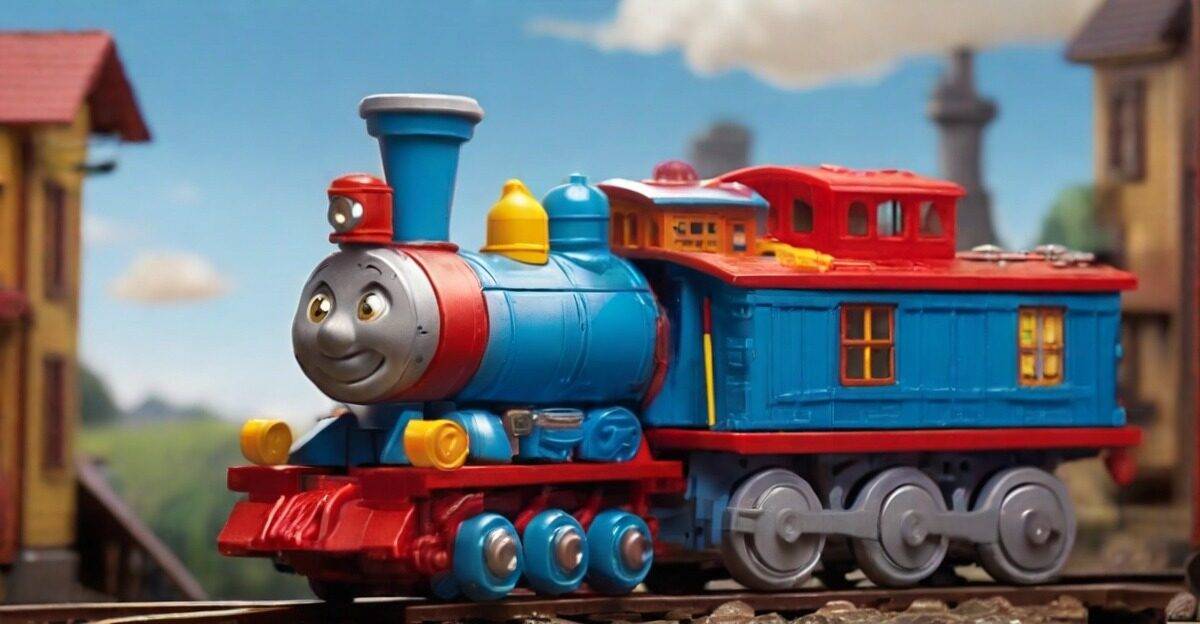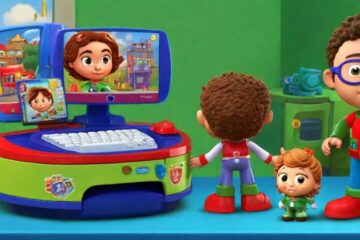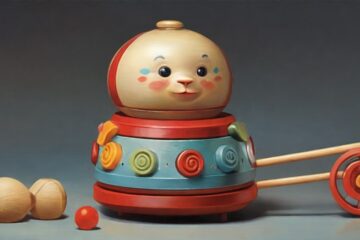The Little Engine That Could Toys has been a beloved children’s classic for generations, inspiring resilience, determination, and the power of a positive mindset. The enduring appeal of this timeless story has transcended the pages of books to become a source of joy through toys that bring the tale to life. In this comprehensive guide, we will explore the enchanting world of “The Little Engine That Could” toys. We’ll delve into their origins, types, and the delightful ways they captivate young hearts.
The Story Behind the Little Engine That Could
Watty Piper wrote the classic children’s story. Since its publication in 1930, it has captivated young audiences. The tale revolves around a little blue engine. It takes on a seemingly impossible task with unwavering optimism. This teaches children the valuable lesson that perseverance and a positive attitude can overcome challenges.
Evolution of The Little Engine That Could Toys
The transition from book to toy was a natural progression. The first toys appeared in the mid-20th century. These toys aimed to capture the spirit of the story. They allow children to interact with the characters and themes in a tangible way. Over the years, the “Little Engine That Could” toy line has evolved to include a variety of options for different age groups and preferences.
Types of The Little Engine That Could Toys
Plush Toys:
Soft and huggable companions for young readers, plush toys bring the characters to life in a snuggly, comforting form. These are perfect for bedtime stories and quiet play.
Wooden Train Sets:
For a more interactive experience, wooden train sets feature the iconic little blue engine and its friends as part of a train system. Children can recreate the story or embark on imaginative adventures of their own.
Puzzle Games:
Adding an educational dimension to play, puzzle games challenge young minds and promote problem-solving skills. These puzzles often feature vibrant illustrations from the story.
Key Features and Design Elements
Bright Colors and Whimsical Designs:
“The Little Engine That Could” toys are known for their eye-catching colors and whimsical designs. These elements stimulate visual appeal, capturing the attention of young children and fostering a sense of wonder.
Durable Materials:
Understanding the wear and tear that comes with enthusiastic play, these toys are crafted from durable materials to ensure longevity. Safety is a top priority, providing parents with peace of mind.
Educational Value:
Beyond their entertainment value, these toys offer educational benefits. From promoting language development during storytelling to enhancing cognitive skills through interactive play, they contribute to a child’s overall learning experience.
Popular Characters in “The Little Engine That Could” Toy Line
Meet the Little Blue Engine:
As the star of the show, the little blue engine takes center stage in the toy line. Its determined expression and cheerful demeanor make it an instant favorite among children.
Other Beloved Characters:
The toy line introduces other endearing characters, like the Shiny New Engine, the Chubby Red Engine, and more. Each character contributes to the rich tapestry of the “Little Engine That Could” world.
Collecting “The Little Engine That Could” Toys
For enthusiasts looking to start or expand a collection, it’s essential to keep an eye on new releases and limited editions. These toys often become cherished collector’s items, with their rarity adding value to the overall collection.
Rarity and Limited Editions
As with any collectibles, rarity enhances the appeal for collectors. Limited edition releases, featuring unique designs or commemorative themes, are particularly sought after. Stay informed about special releases to ensure you don’t miss the opportunity to add these exclusive items to your collection.
Tracking Releases
To collect “The Little Engine That Could” toys effectively, you must stay updated on new releases. Follow official announcements from toy manufacturers. Subscribe to newsletters. Join online communities where collectors share information about upcoming releases. This proactive approach ensures you will be among the first to know about new toys.
Condition Matters
The condition of a toy significantly influences its value in a collection. When acquiring new pieces, prioritize those in excellent condition, preferably in original packaging. For older or vintage items, understanding the grading system for toy collectibles can help you assess their condition accurately.
Connecting with Fellow Collectors
You can have a great time by joining collector communities or forums for “The Little Engine That Could.” In these communities, you can share information about rare finds. You can also talk about your favorite pieces and learn from experienced collectors. Connecting with other fans adds a social aspect to collecting. It also gives you chances to trade or get new items.
Display and Preservation
Consider how you’ll showcase your collection. Displaying the toys in a dedicated space not only enhances their visual impact but also protects them from damage. Store your collection properly. Avoid direct sunlight, extreme temperatures, or humidity. This will preserve its quality over time.
Documentation and Cataloging
Keep detailed records of your collection. Document each piece. Include its release date, condition, and any unique features. This can be valuable for personal enjoyment and potential future appraisals. Consider creating a catalog. You can also use collector apps to organize your growing collection efficiently.
Appraisals and Valuations
Periodically assess the value of your collection. Stay informed about the market trends. Seek professional appraisals if you plan to insure your collection or consider selling pieces. Understanding the value of your collection adds a financial aspect to the hobby.
Trading and Selling
As your collection grows, you might want to trade or sell items. Whether upgrading pieces, completing sets, or making room for new additions, engaging in fair trades or sales within the collector community can be a fulfilling aspect of collecting “The Little Engine That Could” toys.
Enjoying the Journey
Above all, collecting should be an enjoyable journey. Embrace the nostalgia, celebrate each new addition, and share your passion with others. “The Little Engine That Could” toys are cherished collectibles. They also connect to timeless stories that captivated generations.
The Joy of Sharing “The Little Engine That Could”
“The Little Engine That Could” toys make for perfect presents for young readers and toy enthusiasts alike. Whether it’s a plush companion or a wooden train set, these toys are sure to bring joy to any child.
Gift Ideas
When considering gifts, “The Little Engine That Could” toys offer a delightful option. Here are some ideas for gifting these charming playthings:
- Plush Companions: Ideal for bedtime stories and quiet play, plush toys bring the characters to life in a soft, huggable form. Choose the little blue engine or other beloved characters for a cozy and comforting gift.
- Wooden Train Sets: For a more interactive experience, wooden train sets featuring the iconic characters provide hours of imaginative play. These sets often include not only the little blue engine but also its friends, creating a complete and captivating toy experience.
- Puzzle Games: Adding an educational touch to gifting, puzzle games based on “The Little Engine That Could” story challenge young minds and promote problem-solving skills. Look for vibrant illustrations that capture the essence of the tale.
Family Activities
Incorporating “The Little Engine That Could” toys into family activities can enhance the storytelling experience. It can also create lasting memories. Here’s how you can enjoy these toys as a family:
- Storytelling Nights: Set aside dedicated nights for storytelling, using the toys to act out scenes from the classic tale or invent new adventures. This not only entertains but also strengthens the bond between family members.
- Imaginative Play: Encourage children to engage in imaginative play with the toys. These activities foster creativity and teamwork. They include creating new storylines and building intricate train tracks.
- Toy-based Learning: Integrate educational elements into playtime. Use the wooden train sets for lessons on teamwork and problem-solving. You can also use them to teach basic concepts like colors and shapes. Transform play into a fun and enriching experience for children.
Spreading the Joy
“The Little Engine That Could” toys bring joy not only to individual children but also to communities. Consider the following ways to spread the joy beyond your immediate circle:
- Donations: Contribute to local charities, schools, or community centers by donating “The Little Engine That Could” toys. Your generosity can bring smiles to children who may not have easy access to such delightful playthings.
- Storytelling Events: Organize or participate in storytelling events using these toys. This can be done at libraries, schools, or community gatherings, creating shared moments of joy and fostering a love for literature.
- Toy Drives: Support toy drives during festive seasons or community events. “The Little Engine That Could” toys make thoughtful contributions to these drives. They enrich the lives of the children who receive them.
Reviews and Testimonials
Real-life experiences from parents, caregivers, and children provide valuable insights into the impact of “The Little Engine That Could” toys. Positive feedback highlights the enduring charm of these toys. It shows their ability to leave a lasting impression on young minds.
Parental Perspectives
Emma, a Parent:
“I introduced ‘The Little Engine That Could’ toys to my daughter, and it’s been a game-changer. The plush toys are not only adorable but also serve as great companions during bedtime. The story’s lessons on determination and optimism have become an integral part of our daily conversations.”
David, a Father of Two:
“As a parent, I appreciate the educational value these toys bring to the table. My kids love the wooden train sets, and I’ve noticed significant improvements in their problem-solving skills as they engage with the puzzles inspired by the story. It’s a win-win for entertainment and learning.”
Caregiver Insights
Sarah, a Preschool Teacher:
“In my preschool class, ‘The Little Engine That Could’ toys have become a staple. The plush characters make storytelling sessions come alive, capturing the children’s attention and sparking their imagination. It’s a fantastic tool for promoting language development and fostering a love for literature.”
Michael, a Childcare Provider:
“The durability of these toys is impressive. With multiple kids playing together, wear and tear are inevitable. ‘The Little Engine That Could’ toys have proven to be sturdy and safe, making them a reliable choice for group play in our childcare facility.”
Children’s Enthusiasm
Sophie, Age 6:
“I got the little blue engine plush for my birthday, and it’s my favorite toy ever! I like how it never gives up, just like in the story. When I play with it, I feel like I can do anything too!”
Benjamin, Age 8:
“The wooden train set is awesome! I build different tracks and create adventures for the engines. It’s not just fun; I also get to learn about teamwork because the engines always work together, just like me and my friends.”
Maintenance and Care Tips
To ensure your “The Little Engine That Could” toys last a long time, use a few simple but essential maintenance and care practices. By following these tips, you can keep your cherished toys in excellent condition for years to come.
Plush Toys
Regular Cleaning:
To maintain the freshness of plush toys, periodic cleaning is crucial. Use a mild detergent and a damp cloth to gently wipe the surface. For machine-washable plush toys, follow the manufacturer’s instructions for proper cleaning.
Avoid Sun Exposure:
Prolonged exposure to direct sunlight can cause colors to fade. It can also cause fabrics to deteriorate. Store plush toys in shaded areas when not in use to preserve their vibrancy.
Handle with Care:
Plush toys are designed for cuddling. It’s best to avoid rough play. Gentle handling reduces the risk of seams coming loose or stuffing becoming displaced.
Wooden Train Sets
Keep Them Dry:
Wooden train sets are susceptible to damage from moisture. Store them in a dry environment. After playing, wipe them down with a clean, dry cloth to prevent warping or discoloration.
Inspect Regularly:
Check the tracks, connectors, and train cars regularly for any signs of wear or damage. Address any issues promptly. For example, loose screws or splinters. This will maintain safety during play.
Store Properly:
When not in use, store wooden train sets in a cool, dry place. Consider investing in a storage container. It will keep all the pieces organized and protected from dust.
Puzzle Games
Sort and Store Pieces:
For puzzle games inspired by “The Little Engine That Could,” it’s essential to keep track of all the pieces. Encourage children to sort puzzle pieces and store them in a designated container. This prevents loss.
Clean Regularly:
Dust and debris can accumulate on puzzle pieces over time. Use a soft, dry cloth or a mild cleaning solution to wipe the pieces gently. Avoid using harsh chemicals that may damage the illustrations.
Rotate Puzzle Selection:
To prevent excessive wear on specific puzzles, consider rotating the selection. This ensures that all puzzles in your collection receive equal attention and use.
DIY Craft Ideas Inspired by the Little Engine That Could
For the crafty at heart, this section explores creative DIY projects. They are inspired by the characters and themes of “The Little Engine That Could.” Discover new ways to bring the magic of the story into your home. From homemade plush toys to train-themed crafts.
Plush Toy Sewing Project
Create your plush versions of the beloved characters from “The Little Engine That Could.” Here’s a simple sewing project to get you started:
Materials Needed:
- Soft, colored fabric
- Filling material (polyester stuffing)
- Needle and thread
- Fabric markers or felt for details
- Scissors
Instructions:
- Pattern: Create a basic pattern for the plush toy on paper. You can draw inspiration from the characters in the storybook.
- Cut Fabric: Trace and cut the pattern onto the chosen fabric. Cut two identical pieces for each plush toy.
- Sew and Fill: Stitch the pieces together, leaving a small opening. Turn the fabric inside out, fill the plush toy with stuffing, and then close the opening with a neat stitch.
- Add Details: Use fabric markers or cut-out felt pieces to add facial features and other details to bring the character to life.
Train Track Artwork
Transform a simple wooden board into a vibrant train track scene. The scene is inspired by “The Little Engine That Could.””
Materials Needed:
- Wooden board or canvas
- Acrylic paints in various colors
- Paintbrushes
- Masking tape
Instructions:
- Base Color: Paint the entire wooden board with a base color. This will serve as the background for your train track scene.
- Masking Tape Tracks: Once the base color dries, use masking tape to create tracks on the board. Design a simple track layout, and press the edges of the tape firmly to ensure clean lines.
- Paint Tracks: Paint over the tracks with a different color. Allow the paint to dry. Then carefully peel off the masking tape to reveal well-defined tracks.
- Add Details: Use smaller brushes to add details like train stations, trees, and hills along the tracks. Get creative and incorporate elements from “The Little Engine That Could” story.
Storybook Collage
Bring the pages of the storybook to life. Create a collage that captures the essence of “The Little Engine That Could.”
Materials Needed:
- Pages from the storybook or color copies
- Scissors
- Glue
- Poster board or canvas
Instructions:
- Select Pages: Choose specific pages from the storybook that feature key scenes or characters.
- Cut and Arrange: Cut out elements like the little blue engine, other characters, and scenery. Arrange these cutouts on the poster board or canvas.
- Glue: Once satisfied with the arrangement, glue the cutouts onto the board. Ensure a secure attachment for a lasting collage.
- Background Details: Enhance the collage by adding background details using colored pencils or additional cutouts. Consider incorporating text snippets from the story for an extra touch.
Train Ticket Invitations
If you’re planning a themed event, create train ticket invitations. They should be inspired by “The Little Engine That Could.””
Materials Needed:
- Cardstock paper
- Colored markers
- Scissors
- Envelopes
Instructions:
- Ticket Design: Cut the cardstock paper into rectangular shapes to resemble train tickets.
- Details: Use colored markers to draw train-related details on the tickets, such as train cars, tracks, and the iconic little blue engine.
- Event Information: Write the event details on the tickets, including the date, time, and location.
- Envelope: Place each ticket in a small envelope, sealing it with a train-themed sticker or drawing.
Environmental and Ethical Considerations
In a world increasingly conscious of environmental impact and ethical sourcing, it is crucial to understand the practices of toy manufacturers. Explore the eco-friendly and ethical aspects of “The Little Engine That Could” toy production. Learn how you can make informed choices when adding to your collection.
Sustainable Materials
Eco-Friendly Options:
Several companies within “The Little Engine That Could” toy line prioritize sustainability. They do this by opting for eco-friendly materials. Look for toys made from recycled or responsibly sourced materials. This reduces the environmental footprint associated with their production.
Packaging Practices:
Consider the packaging of the toys. Brands committed to sustainability often use minimal and recyclable packaging materials. Choosing products with eco-conscious packaging contributes to reducing waste.
Ethical Sourcing
Fair Labor Practices:
Explore the manufacturing practices of the toy brands. Ethical sourcing includes fair labor practices. It ensures workers making “The Little Engine That Could” toys are treated fairly and paid decent wages.
Transparent Supply Chain:
Choose toys from companies with transparent supply chains. Brands that openly share information about their sourcing and production processes demonstrate a commitment to ethical practices.
Eco-Friendly Initiatives
Carbon Footprint Reduction:
Companies focused on environmental responsibility often implement initiatives to reduce their carbon footprint. Look for those actively working to minimize energy consumption, use sustainable transportation, and employ other eco-friendly practices.
Recyclability and Biodegradability:
Evaluate the recyclability and biodegradability of the materials used in the toys. Opting for products that can be recycled or naturally decompose contributes to a more sustainable life cycle.
Community Impact
Community Engagement:
Brands that engage with and contribute to local communities showcase a commitment to positive impact. Consider supporting toy manufacturers actively involved in community initiatives, educational programs, or charitable contributions.
Philanthropy and Social Responsibility:
Learn about the philanthropic efforts and social responsibility initiatives of the toy brands. Supporting companies that give back to society ensures that your purchase contributes to broader positive outcomes.
Cultural Impact and Early Literacy
The toys based on “The Little Engine That Could” are more than just toys. They have a special role in helping children learn to read and influencing their culture. These toys are important for early literacy skills. They also encourage children to enjoy reading.
Literary Heritage
Timeless Storytelling:
“The Little Engine That Could” isn’t just a story. It’s a literary heritage passed down through generations. The toys serve as tangible representations of this timeless narrative. They introduce children to a classic tale that resonates with universal themes of determination and optimism.
Introduction to Narrative Structures:
Through interaction with the toys, children become familiar with narrative structures. The characters, settings, and plot elements of “The Little Engine That Could” provide a foundation for understanding storytelling conventions. They enrich readers’ literary experiences.
Language Development
Vocabulary Building:
Exposure to the characters and scenarios in “The Little Engine That Could” toys contributes to vocabulary building in young children. The story presents rich and varied contexts. This provides opportunities for language expansion and learning new words.
Interactive Storytelling:
The toys facilitate interactive storytelling. Children can act out scenes from the story, enhancing their verbal communication skills. This form of interactive play goes beyond passive reading. It actively engages children in the narrative.
Imagination and Creativity
Fostering Creativity:
“The Little Engine That Could” toys inspire creativity. They encourage children to invent their own stories and adventures. Imaginative play with the characters and settings cultivates creative thinking. This is an essential skill in both literary and real-world contexts.
Role in Pretend Play:
Pretend play, often spurred by these toys, allows children to step into the shoes of the characters. This role-playing not only enhances their understanding of the narrative but also promotes empathy and emotional intelligence.
Cultural Universality
Global Appeal:
“The Little Engine That Could” is a story that is known by people all over the world, regardless of their country or language. The toys in the story help children from different backgrounds feel connected and share a common experience.
Teaching Values Through Play:
The story’s themes of resilience, determination, and optimism are ingrained in the toys. Through play, children internalize these values, contributing to the development of their moral compass and understanding of positive character traits.
Parental Engagement
Bonding Through Storytelling:
“The Little Engine That Could” toys create opportunities for parental engagement. Shared storytelling moments between parents and children strengthen the parent-child bond, creating lasting memories and nurturing a positive attitude towards reading.
Transition to Independent Reading:
As children grow, their familiarity with the story can serve as a bridge to independent reading. The positive associations formed during early interactions with the toys can motivate children to explore the world of books on their own.
Impact on Child Development
“The Little Engine That Could” toys play a crucial role in fostering holistic child development. Here’s how they contribute to various aspects of a child’s growth:
Cognitive Development:
- Imaginative Play: Encourages children to create stories, and scenarios, and engage in imaginative play, promoting cognitive development.
- Problem-Solving: Puzzle games within the toy line enhance problem-solving skills as children work to fit the pieces together.
Emotional Development:
- Resilience and Optimism: The central theme of the story promotes resilience and optimism, helping children understand and navigate their emotions.
- Empathy: Interacting with characters fosters empathy, as children connect with the challenges faced by the little blue engine and its friends.
Social Skills:
- Group Play: Wooden train sets facilitate group play, encouraging social interaction and cooperative play among children.
- Sharing and Communication: Family activities centered around these toys promote sharing and effective communication within a group setting.
Language Development:
- Storytelling: Using the toys to recreate the story or invent new narratives enhances language development and communication skills.
- Vocabulary Building: Exposure to diverse characters and scenarios contributes to vocabulary building in young children.
Motor Skills:
- Manipulating Pieces: Puzzle games and wooden train sets involve manipulating pieces, aiding in the development of fine motor skills.
- Physical Activity: Incorporating physical movement during play with the toys contributes to the development of gross motor skills.
“The Little Engine That Could” toys, with their diverse range and thoughtful design, thus become valuable tools in supporting a child’s comprehensive development.
Comparison with Other Educational Toys
“The Little Engine That Could” toys are different from other educational toys on the market. They have a special mix of storytelling, play, and educational benefits. Unlike traditional educational toys that only focus on specific skills, these toys take a more complete approach. They combine imaginative play with cognitive and emotional growth.
Interactive Storytelling:
“The Little Engine That Could” toys are different from other educational toys. Most educational toys only focus on skill-building exercises. But, these toys also encourage interactive storytelling. Children can engage with the characters, reenact scenes from the story, and create their own narratives. This helps foster creativity and language development.
Emotional Development:
The Little Engine That Could toys focus on emotional development. They teach children about resilience, determination, and optimism. These themes are important for children to understand and handle their emotions. Other educational toys may focus on cognitive skills, but The Little Engine That Could toys are unique in their emphasis on emotional growth.
Versatility:
“The Little Engine That Could” toys come in various forms. These include plush toys, wooden train sets, and puzzles. This versatility allows parents to choose toys that align with their child’s preferences and developmental stage. It offers a broader range of options compared to some specialized educational toys.
Cultural Impact:
“The Little Engine That Could” has had a big impact on culture. Few educational toys have matched it.” The story’s universal themes have resonated across generations. These toys are not only educational but also culturally significant. They introduce children to a classic narrative that transcends time.
FAQs (Frequently Asked Questions)
Who is the author of The Little Engine That Could?
“The Little Engine That Could” was written by Watty Piper. Originally published in 1930, the timeless story has since become a cherished classic in children’s literature.
When did The Little Engine That Could Toys first appear?
The transition from the storybook to toys occurred in the mid-20th century. The first Little Engine That Could toys were designed to allow children to interact with the beloved characters and themes tangibly.
What types of The Little Engine That Could toys are available?
Several types of The Little Engine Could toys, including plush toys, wooden train sets, and puzzle games. Each type offers a unique way for children to engage with the story, providing options for different preferences and age groups.
Are The Little Engine That Could toys suitable for all age groups?
Yes, “The Little Engine That Could” toys are designed with various age groups in mind. Plush toys are perfect for young readers, wooden train sets offer interactive play for a slightly older audience, and puzzle games provide educational challenges for different age ranges.
What are the key features of “The Little Engine That Could” toys?
“The Little Engine That Could” toys are known for their bright colors, whimsical designs, and educational value. They are crafted from durable materials to ensure longevity and safety. The key features include eye-catching aesthetics, durability, and contributions to a child’s overall learning experience.
Are there any limited edition or special release The Little Engine That Could toys?
Indeed, there have been limited edition and special release versions of “The Little Engine That Could toys. These may include unique designs, additional features, or tie-ins with specific events. Collectors often keep an eye out for such releases to add to their collections.
Conclusion:
In conclusion The Little Engine That Could Toys have successfully brought the magic of the classic story to children worldwide. These toys foster creativity and imagination in children. They do this through their enchanting designs, educational benefits, and enduring popularity. Whether you collect toys, are a parent, or are looking for the perfect gift, exploring “The Little Engine That Could” toys will bring joy and inspiration to your journey.




